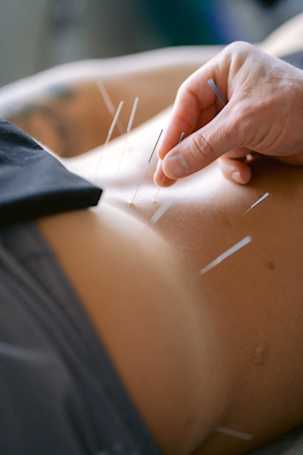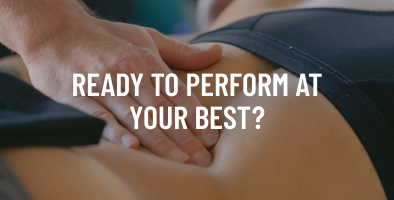
The Treatment of Back Pain with Sports Medicine Acupuncture
According to the Journal of Musculoskeletal Pain, two-thirds of the population will experience idiopathic low back pain with roughly half of the adult population suffering from back pain at some point during a 12 month period1. Idiopathic means that the source or cause of the back pain is unknown!
Back pain has several causes
Back pain can be caused by disc herniation, when a disc in between the vertebrae presses into the space around it causing pressure and inflammation to build up in the surrounding tissues and often damaging the nerves as they exit the spine.
Back pain can be caused by the normal degenerative changes of the bones in the spine as we age. According to the American Academy of Orthopedic Surgeons, 85% of the population will develop these degenerative changes by the age of 60, many people develop these changes even earlier.
Back Pain can also be caused by an acute muscle strain or a ligament sprain for instance, whiplash, overtraining with heavy weights and poor mechanics, or during a fall or impact.
Facet joint impingement is another common form of back pain. The facet joints are small points of contact between two vertebrae and they can become jammed, stuck, or damaged sometimes for no apparent reason at all!
This is not an exhaustive list of potential causes for back pain, this is just meant to give an idea.
Treating Back Pain with Sports Medicine Acupuncture®
As practitioners certified in Sports Medicine Acupuncture®, we have a unique set of tools we can use to treat all forms of back pain, even when the exact cause is not known.
Our first step is to perform a comprehensive assessment to help us identify which specific tissue is damaged so we can create a custom tailored treatment plan geared toward getting you out of pain as quickly as possible and permanently, if possible.
Measuring the posture, angle and tilt of the hips, and performing functional movement screens gives us a rich and three-dimensional picture of how your body is working, or not, and what needs to be focused on from a big picture perspective. In addition to the wider-angle lens used in posture and movement assessment, we perform specific orthopedic tests to tease out where the exact dysfunction is hiding that’s causing your unique pain.
Once we have identified your specific idiosyncrasies we will figure out the best combination of Sports Acupuncture, Herbal Poultices, PNF Stretches, Exercises, and/or Kinesiotaping to help your body perform better and recover faster.
My Experiences with Back Pain
I have severely sprained my low back twice while training for competitions in powerlifting and the pain was debilitating. It was so bad I couldn’t drive my car because sitting in the seat was too painful.
All acupuncture is not the same. The first time I sprained my back was before Uzi had joined my practice, and I didn’t know where to turn. Lower back pain is unfortunately one of those conditions I can’t treat on myself (knee pain is a different story). Over a month later, the lingering pain affected my performance at my first powerlifting meet and forced me to take a lower number on my final deadlift attempt or risk a visit to the ER.
Six months later, I sprained my lower back again, but this time Uzi was at my practice and I was able to see him for treatments. Two treatments and one week later and I was 90% pain free and able to train at close to 100%. Shortly thereafter, I competed at my second meet and was able to lift without hesitation – adding 81lbs to my heaviest deadlift!
If you have back pain, contact San Diego Sports Acupuncture!
The truth of the matter is, there are a lot of practitioners out there, even some doctors, who do what they do well enough. But they don’t really know how to diagnose or give treatments for specific types of back pain.
At San Diego Sports Acupuncture, we will go the extra mile to identify your specific problem and create a treatment plan for you that works. We know what it’s like to be in your shoes.
Bente Danneskiold-Samsøe & Else Marie Bartels (2004) Idiopathic Low Back Pain: Classification and Differential Diagnosis, Journal of Musculoskeletal Pain, 12:3-4, 93-99, DOI: 10.1300/J094v12n03_14
More Articles


